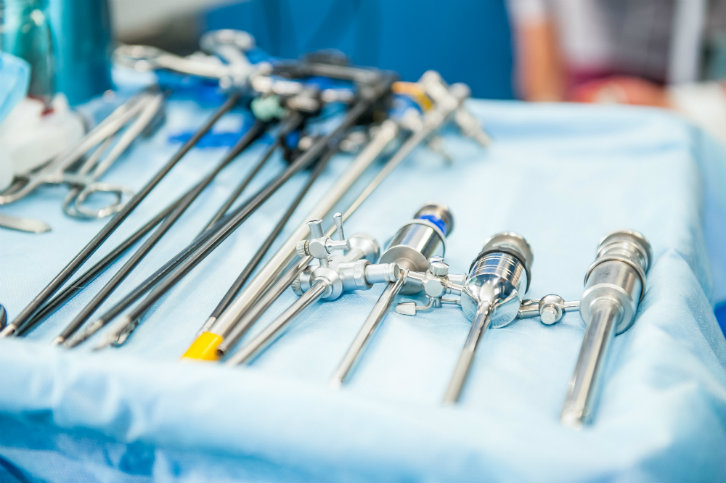
Minimally invasive procedures limit the size of any incisions, which lessens healing time. Non-invasive procedures don’t require incisions or skin-puncturing, or the removal of tissue. However, both categories are still surgery, which means there can be soreness, swelling and a needed recovery period. But which type of weight loss surgery is the least invasive?
Minimally Invasive and Non-Invasive Weight Loss Surgeries
Gastric Sleeve
- Category: Gastric Sleeve is a minimally invasive procedure
- Procedure: Small incisions are made for laparoscopic tools. A large portion of the stomach is removed, including the part that creates hunger-producing hormones. What remains is long and thin, resembling a sleeve.
- How it works: Because the stomach is smaller and hunger hormones are no longer produced, the patient feels less hunger and is satisfied with less food.
- Expected weight loss: 30 to 50 percent of excess weight in 6-12 months; 50-70 percent excess weight over two years.
- Scarring: Laparoscopic incisions of ½- to ¾-inch long each
Endoscopic Sleeve Gastroplasty
- Category: Endoscopic Sleeve Gastroplasty is a non-invasive procedure
- Procedure: The same result as the gastric sleeve, though with no incisions. A small camera and suturing device is inserted down your throat into your stomach during general anesthesia. The device puts sutures in your stomach that change its size and shape.
- How it works: Its restricts the amount of food you can eat and the amount of calories the body can absorb.
- Expected weight loss:30 to 50 percent of excess weight in 6-12 months; 50-70 percent excess weight over two years.
- Scarring: None
Gastric Balloon
- Category: Gastric Balloon is non-invasive
- Procedure: A small, deflated balloon is inserted through the mouth and guided to the stomach while the patient is under sedation. Once in place, the balloon is filled with a saline solution.
- How it works: Its volume fills up part of the stomach, making the patient feel less hungry. It typically is removed in a few months.
- Expected weight loss:10 percent of excess weight over six months.
- Scarring: None
Lap-Band
- Category: Lap-Band is a minimally invasive procedure
- Procedure: Small incisions are made for laparoscopic tools. A band is placed around part of the stomach to make a small pouch.
- How it works: It limits food intake, the patient feels less hunger and digestion is slower. It’s also adjustable and can be removed later.
- Expected weight loss: 50 percent of excess weight over two years.
- Scarring: None
Gastric Bypass
- Category: Gastric Bypass is minimally invasive
- Procedure: Small incisions are made for laparoscopic tools. A small pouch is created for the stomach and intestines are rerouted. Patients are under general anesthesia.
- How it works: Patients are full faster due to the small size of the stomach pouch. In addition, they absorb fewer calories and nutrients due to the intestine rerouting.
- Expected weight loss: 65 to 80 percent of excess weight over 18 months.
- Scarring: Laparoscopic incisions of ½- to ¾-inch long each.
Myths About the Risks of Weight Loss Surgery
There are quite a few misconceptions about the risks and complications associated with weight-loss surgery. Some of them are outdated; others are simply incorrect. Here are a few of the most common myths, and some facts to set things straight:
| Myth | Fact |
| People who have bariatric surgery could lose the weight if they just had more discipline. | The National Institutes of Health Experts Panel “recognizes that ‘long-term’ weight-loss, or in other words, the ability to maintain weight-loss, is nearly impossible for those affected by severe obesity by any means other than metabolic and bariatric surgery.” |
| Most people who have surgery regain their weight. | About half gain a small amount of their weight back (5 percent or so) two or more years after surgery. But research has shown that most bariatric surgery patients maintain a weight loss equal to or greater than 50 percent of their excess body weight. |
| Insurance won’t cover bariatric surgery. | Insurance coverage does vary. But many people don’t realize that Medicaid and Medicare do often cover weight-loss surgery, especially when it’s considered medically necessary. |
| Bariatric surgery is really dangerous. | For obese patients, the risk of death within 30 days of a bariatric surgery procedure is less than that of gallbladder surgery or hip replacement surgery. And studies have shown that severely obese patients who have bariatric surgery have a lower risk of death from any cause than severely obese patients who do not. |
Bariatric procedures have become much more common in the past decade. In 2017, there was an estimated total of 228,000 gastric surgeries performed in the United States, according to the American Society for Metabolic and Bariatric Surgery.
Among the procedures themselves, the rates of serious complications within 30 days vary by only degrees. In 2012, studies by Stanford University, Cleveland Clinic Florida and the Navel Medical Center in San Diego analyzed safety data from hundreds of thousands of procedures performed over a three-year period. The serious complication rates were:
- Sleeve gastrectomies – less than one percent (0.96 percent)
- Gastric banding – less than one percent (0.25 percent)
- Gastric bypass – just over one percent (1.25 percent)
Another study at the Obesity Center Amsterdam worked to develop a risk model predicting which patients might have complications. In following 1,709 patients between 2007 and 2015, the researchers found that about 20 percent of all bariatric surgery patients developed either a short-term or a long-term issue (the large majority, almost 73 percent, were short-term). Patients were divided into groups with certain risk factors. Predictors for developing complications were such things as high body mass index, high blood pressure, diabetes, age, gender, use of anticoagulants, chronic obstructive pulmonary disease or the need for revision surgery. This is one reason why it’s important to make sure your surgeon and doctors have an up-to-date medical history for you.
Ask Us About Non-Invasive Bariatric Procedures
Did we answer your questions about non-invasive weight loss procedures? Are you interested in bariatric surgery but aren’t sure which is the right type for you? Ask the Soma Weight Loss team. You can call us toll-free at 855-766-2411 (855-SOMA-411) or contact us here.




